
 Happy 2016!! hope your holidays were peaceful and gave you all time to rejuvenate and ready to face the new year. As schools on the Island are open again, thought this article was well timed. It has some great ideas for inclusion in the classroom. If you are a teacher, EA, ECE worker in a class, this has some super information & has a webinar that is a must watch. If you are a parent or support person, this may give you some ideas for supporting your loved one in the class. The tips, visuals, resources, fidget toys, movements needed in the class, how to set up the class, choices, are all covered. Please check it out, as well as read though the article.
Happy 2016!! hope your holidays were peaceful and gave you all time to rejuvenate and ready to face the new year. As schools on the Island are open again, thought this article was well timed. It has some great ideas for inclusion in the classroom. If you are a teacher, EA, ECE worker in a class, this has some super information & has a webinar that is a must watch. If you are a parent or support person, this may give you some ideas for supporting your loved one in the class. The tips, visuals, resources, fidget toys, movements needed in the class, how to set up the class, choices, are all covered. Please check it out, as well as read though the article. _____________________________________________________________________________
Great Webinar was included in this article. It's almost an hour ,addressing ways to support those who need supports. Some super ideas with the 'toolkits' well worth watching. She does a great job in ensuring that these are techniques that can and are used for ALL..not just the student with special needs. Super visuals, and references to material are all included.
Supporting positive student behavior can be a challenge for any teacher—and in an inclusive classroom, it can be especially difficult to manage students with so many different needs and ability levels in one room. Tune in to this webinar for expert help with addressing behavior challenges in your inclusive class!
______________________________________________________________________________________
Here's the article:
Hard to believe 2015’s almost over. If you’re a teacher, though, the year’s only half done—when you ring in 2016, you’re kicking off five more great months with your students. There’s so much more time left to teach, inspire, and motivate them, and ensure that every student participates and learns.
If strengthening inclusive practices is on your list of resolutions for 2016, this post will equip you with some specific ideas for making it happen. Today I’m sharing 10 “inclusion resolutions” to make in the new year, complete with some favorite tips from our expert authors. Here’s to a terrific 2016—thanks for reading our Inclusion Lab posts this year, and stay tuned for much, much more!
1. I will see every student as capable.
 Refusing to underestimate your students is the key to helping them reach their full potential. In 2016, give yourself little reminders to presume the competence of each student in your classroom. This book excerptgives you helpful pointers on how to align your language and mindset with this critical concept, and recognize the different gifts and strengths that all of your students bring to the table.
Refusing to underestimate your students is the key to helping them reach their full potential. In 2016, give yourself little reminders to presume the competence of each student in your classroom. This book excerptgives you helpful pointers on how to align your language and mindset with this critical concept, and recognize the different gifts and strengths that all of your students bring to the table.2. I will reframe weaknesses as strengths and needs.
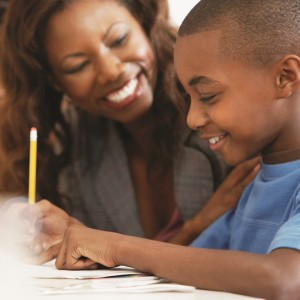 An important part of presuming competence is starting with a student’s strengths. Focusing on challenges first can be immobilizing—and makes it tough to move forward with an IEP and effective instruction that meets his or her needs. In the new year, try a new way to think about your students’ “weaknesses”—instead, flip them into specific strengths and needs statements that point the way toward solutions. This graphic gives you 5 great examples.
An important part of presuming competence is starting with a student’s strengths. Focusing on challenges first can be immobilizing—and makes it tough to move forward with an IEP and effective instruction that meets his or her needs. In the new year, try a new way to think about your students’ “weaknesses”—instead, flip them into specific strengths and needs statements that point the way toward solutions. This graphic gives you 5 great examples.3. I will enhance my students’ connectedness to school.
 When students feel connected to school, the benefits are undeniable—in their new book, Lee Kern and her coauthors call this sense of connectedness “a powerful resilience factor that helps to improve both student behavior and academic performance and prevent truancy and dropout.” Look for new ways to engage students and promote their sense of connectedness: for example, invite more students to be active members of planning committees, start a mentoring program to support at-risk students, and encourage more participation in school clubs. This book excerpt has more ideas on increasing social and academic engagement and boosting connectedness.
When students feel connected to school, the benefits are undeniable—in their new book, Lee Kern and her coauthors call this sense of connectedness “a powerful resilience factor that helps to improve both student behavior and academic performance and prevent truancy and dropout.” Look for new ways to engage students and promote their sense of connectedness: for example, invite more students to be active members of planning committees, start a mentoring program to support at-risk students, and encourage more participation in school clubs. This book excerpt has more ideas on increasing social and academic engagement and boosting connectedness.4. I will make sure my classroom is learning-friendly.
 Now that the school year’s half over and you’re familiar with your students’ needs and preferences, what simple adjustments can you make to your classroom to ensure that all students are alert, relaxed, and ready to learn? Can you change up your lighting and your seating arrangements? Can you add some adaptations for students with sensory processing issues? Take a look at your current classroom setup and think about a few small steps you can take to increase learning and engagement. The suggestions in this book excerpt can help.
Now that the school year’s half over and you’re familiar with your students’ needs and preferences, what simple adjustments can you make to your classroom to ensure that all students are alert, relaxed, and ready to learn? Can you change up your lighting and your seating arrangements? Can you add some adaptations for students with sensory processing issues? Take a look at your current classroom setup and think about a few small steps you can take to increase learning and engagement. The suggestions in this book excerpt can help.5. I will take steps to create a bully-free classroom.
 Hang this poster prominently in your classroom. Offer emotional support by sharing these student-to-student tipsfrom kids who’ve been bullied. Follow the tips in this bullying prevention post, and create a bullying prevention toolbox from the resources listed inthis post.
Hang this poster prominently in your classroom. Offer emotional support by sharing these student-to-student tipsfrom kids who’ve been bullied. Follow the tips in this bullying prevention post, and create a bullying prevention toolbox from the resources listed inthis post.6. I will incorporate student fascinations, not forbid them.
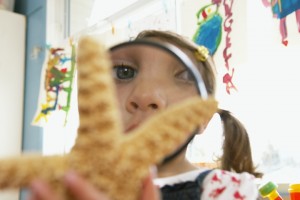 When a child has a special interest she wants to talk about all day, it can be tempting to dissuade her or insist that she direct her attention elsewhere. But fascinations can be an excellent way to hook a student’s interest and engage her with academic material. Try incorporating students’ special interests into classroom lessons—for example, use trains or dinosaurs to teach a multiplication lesson if a student is especially fascinated by them, or have students create stories or scrapbooks about their special interests. (Paula Kluth’s Just Give Him the Whale has tons of specific suggestions for using your students’ fascinations as powerful learning tools.)
When a child has a special interest she wants to talk about all day, it can be tempting to dissuade her or insist that she direct her attention elsewhere. But fascinations can be an excellent way to hook a student’s interest and engage her with academic material. Try incorporating students’ special interests into classroom lessons—for example, use trains or dinosaurs to teach a multiplication lesson if a student is especially fascinated by them, or have students create stories or scrapbooks about their special interests. (Paula Kluth’s Just Give Him the Whale has tons of specific suggestions for using your students’ fascinations as powerful learning tools.)
7. I will sharpen my collaboration skills to make inclusion successful.
 Why is collaboration such an important part of inclusion? Janney & Snell call it the glue that holds inclusion together: “Defining…services and supports, and ensuring that they follow the student throughout the school day as needed, requires the collaboration of teachers, specialists, administrators, students, and family members.” Here’s a quick brushup on collaboration and a book excerpt that underscores the importance of collaboration to the IEP process.
Why is collaboration such an important part of inclusion? Janney & Snell call it the glue that holds inclusion together: “Defining…services and supports, and ensuring that they follow the student throughout the school day as needed, requires the collaboration of teachers, specialists, administrators, students, and family members.” Here’s a quick brushup on collaboration and a book excerpt that underscores the importance of collaboration to the IEP process.
(This infographic also gives you a helpful summary of 10 key steps to creating an effective inclusion team.)
8. I will support more peer-to-peer collaboration, too.
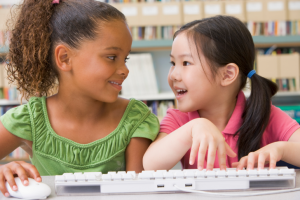 Peer supports are a two-way street: they boost the academic outcomes, social skills, and self-esteem of students with and without disabilities. What new strategies can you try this year to get diverse learners working together and helping each other? Can you set up more peer tutoring opportunities? Can you assign small-group cooperative projects and activities that encourage interaction between students of differing backgrounds and abilities? Could you explore starting up a more formal peer buddy program to increase students’ engagement and participation in both academics and social events? (This book and this book provide excellent, step-by-step instructions for implementing informal peer supports and a more structured peer buddy program.)
Peer supports are a two-way street: they boost the academic outcomes, social skills, and self-esteem of students with and without disabilities. What new strategies can you try this year to get diverse learners working together and helping each other? Can you set up more peer tutoring opportunities? Can you assign small-group cooperative projects and activities that encourage interaction between students of differing backgrounds and abilities? Could you explore starting up a more formal peer buddy program to increase students’ engagement and participation in both academics and social events? (This book and this book provide excellent, step-by-step instructions for implementing informal peer supports and a more structured peer buddy program.)9. I will use positive methods to support positive behavior.
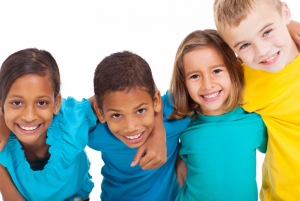 Supporting positive student behavior can be a challenge for any teacher—and in an inclusive classroom, it can be especially difficult to manage students with so many different needs and ability levels in one room. Tune in to this webinar for expert help with addressing behavior challenges in your inclusive class. Presented by veteran educator Whitney Rapp (in cooperation with The Inclusive Class), the webinar can be viewed right here:
Supporting positive student behavior can be a challenge for any teacher—and in an inclusive classroom, it can be especially difficult to manage students with so many different needs and ability levels in one room. Tune in to this webinar for expert help with addressing behavior challenges in your inclusive class. Presented by veteran educator Whitney Rapp (in cooperation with The Inclusive Class), the webinar can be viewed right here:10. We will see how our school’s doing—and how far we need to go.
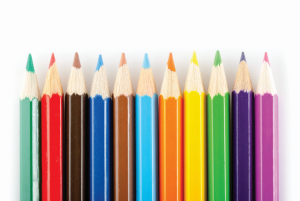 To make the most of inclusion, your whole school needs to be committed to making it work. Whether your school’s just getting started with embracing inclusive practices or you’re well on your way to inclusion for all, share this printable tool with your administration in 2016. It’ll help your school take a snapshot of its current inclusion status so you can understand where you are and plan where you need to go in the near future.
To make the most of inclusion, your whole school needs to be committed to making it work. Whether your school’s just getting started with embracing inclusive practices or you’re well on your way to inclusion for all, share this printable tool with your administration in 2016. It’ll help your school take a snapshot of its current inclusion status so you can understand where you are and plan where you need to go in the near future.http://blog.brookespublishing.com/inclusion-resolutions-10-things-to-do-to-include-all-students-in-the-new-year/

No comments:
Post a Comment